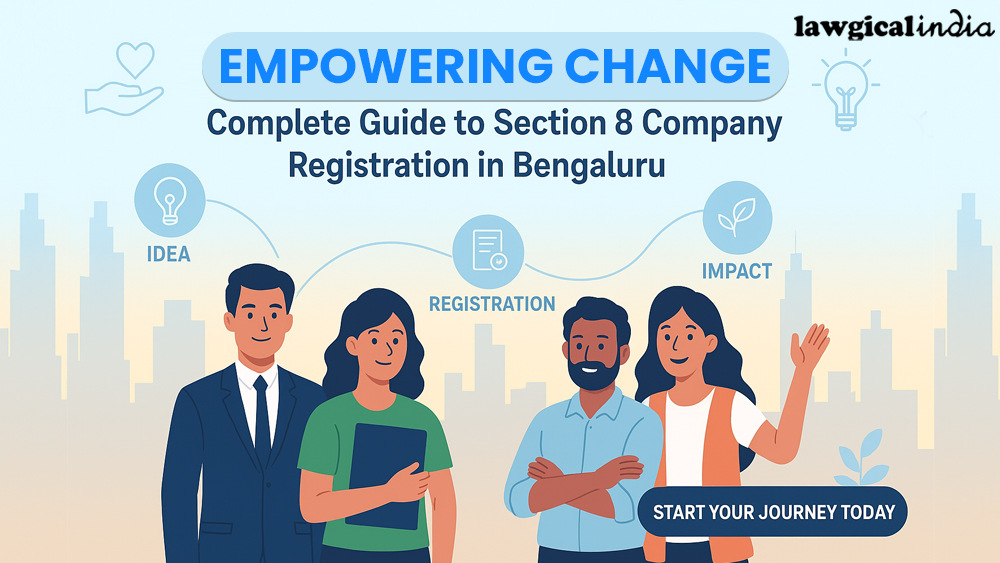A trademark is a visual depiction of a name, word, label, device, or numeric character that a corporation uses to differentiate its goods and/or services from others.
A trademark distinguishes the goods and/or services that a person is offering/selling from those offered/sold by others.
In India, trademark registration is available for words, logos, numerals, slogans, devices, and more. The owner of a trademark has the legal right to use the mark exclusively if it is registered.
Trademarks are registered in India by the Controller General of Designs, Patents, and Trademarks, Ministry of Commerce and Industry, Government of India. The Trademark Act of 1999 is the legislation under which trademarks are registered in India., which allows trademark owners to sue for damages if their trademarks are infringed upon.
Trademark registration, however, is a lengthy procedure, including several procedures. Therefore, the trademark registration process in India is discussed on this page.
Trademark Registration Process
Steps :
- Searching For Trademarks.
- Filling out the application.
- Application allotment.
- Vienna Codification.
- Examination.
- Publishing in a trademark journal.
- Trademark Registration.
These are the essential steps to be followed while the trademark registration process continues.
Now, let us understand it in detail.
It starts with searching for a trademark which is often ignored but is a vital part of trademark registration. The applicant must be cautious when choosing a trademark because so many different types of trademarks are accessible. Therefore, it is critical to conduct a public search on the Trade Marks Registry's trademarks database to ensure that the trademark is distinctive and that no other trademark is similar or identical.
Once you have searched for trademarks, you can submit an application for TM registration to the Trademark Registrar. It is essential to ensure the application is filled out correctly and submitted with the appropriate registration fee.
A trademark registration application must include the following information:
- The Trademark or the Logo
- Trademark owner's name and address
- Classification or Trademark Class
- Trademark used since the date
- The goods or services are explained in detail.
Note:- The trademark registration application is Form TM- A, which can be filed electronically through the IP India official website or in person at the Trade Marks Office, depending on the trademark's jurisdiction.
A trademark application allotment number is issued within one or two working days of filing a trademark registration application with the Trademark Registrar.
Now, it is to be understood what Vienna Codification is.
The Vienna Classification, often known as the Vienna Codification, is an international classification of figurative trademarks' figurative features established by the Vienna Agreement (1973).
Upon submission of the trademark registration application, the Trademark Registrar will use the Vienna Classification to classify the trademark based on its symbolic elements.
The trademark application status usually is "Sent for Vienna Codification" when this process is in progress.
After this, the trademark registration process leads to examination. I think this is the most complicated step.
It may take 12 to 18 months, and there can be three different outcomes of the examination:
- Absolutely.
- Conditionally.
- Object.
There are three different short steps for all of these.
If the trademark registration application is fully approved, the Trademark Journal will feature the trademark once it has been approved for publication.
If the application is conditionally accepted, the trademark will be published in the journal after fulfilling the conditions, which is expected to be completed within a month. If the Trademark Officer raises objections to the application, the trademark applicant can present their arguments to the officer to address the objections. The trademark will be permitted for publication in the journal if the Trademark Officer is satisfied with the justifications provided by the applicant. If the Trademark Officer is unconvinced by the explanations, the applicant can appeal the decision to the Intellectual Property Appellate Board.
Now comes the publication of a trademark.
When a trademark registration application is approved, it is advertised and publicised in the Trade Marks Journal for four months. The purpose of the publication and advertisement is to encourage the general public to file an opponent to the mark's registration.
The Trademark Journal is released weekly and comprises all the trademarks the Registrar has approved. Once a trademark is published in the journal, public members can object to its registration if they think it could cause them harm.
If no objections are lodged within 90 to 120 days of the mark's publication, it will usually be registered within 12 weeks to months.
If a third party files an objection to the trademark registration application, the Trademark Hearing Officer will conduct a hearing. During the hearing, the trademark applicant and the opposing party will be permitted to testify and explain why the trademark application should or should not be registered. The Trademark Hearing Officer will choose whether to accept or reject the trademark registration application based on the hearings and evidence presented. It is also possible to challenge the decision of the Trademark Hearing Officer by filing an appeal with the Intellectual Property Appellate Board.
Finally, it is on the verge of registration.
The final step in the process is registration, which occurs once the application has overcome any objections and/or opposition to the trademark registration.
The trademark application will receive the trademark manuscript and registration certificate after they have been prepared and sent if there are no objections or opposition to the trademark registration application.
The trademark is regarded as the owner's registered trademark once the trademark registration certificate is issued, providing the trademark owner exclusive use of the mark. Next to the logo or trademark, the ® symbol can now be used.
Advantages of Trademark Registration
- A trademark registration identifies the originator of the product or service.
- A registered trademark ensures that the product and service are of high quality.
- A registered trademark aids in the promotion of both goods and services.
Importance of Trademark
Given the benefits of registering a trademark while running a business, as demonstrated above, let us now consider the relevance of the registration:
- Exclusive identity
- A trademark is never-ending
- A trademark is a shield
- A trademark is economical
- A trademark is an asset
Renewal Of Trademark.
After every ten years, the trademark can be revived indefinitely. As a result, your logo/brand name registration will be permanently protected.
As seen above, trademark registration in India is a simple process. It's a basic procedure but crucial for brand name registration.
We at Lawgical India can assist you with the registration process, so you don't have to worry about deadlines or responses.
Recently under class 24 and 27, a company's trademark registration was done by Lawgical India smoothly. The company 'Ghar Roshan' deals in clothing, bedsheets, Footwear, Electrical appliances, Kitchen Utensils and Sports equipment. Satnam Kaur owns the company.
As a result, recognise the value of your brand name registration and take action to preserve it as soon as possible.











